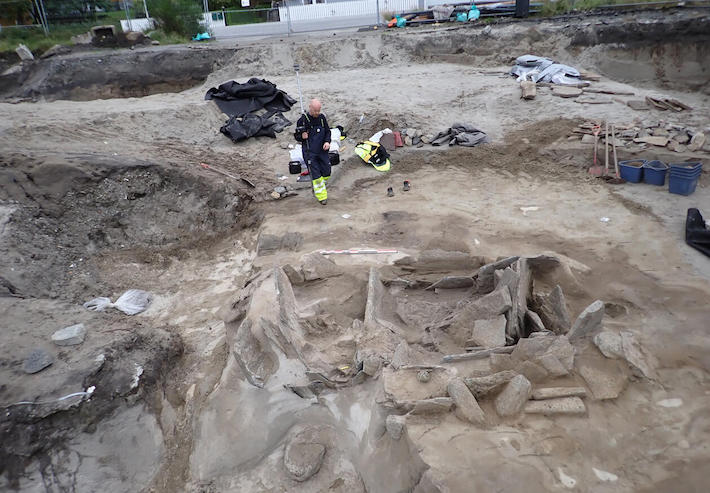 SELJE, NORWAY—A 4,000-year-old stone-lined tomb discovered near the coast of southwestern Norway may hold the remains of the region’s first farmers, according to a Live Science report. The cist, excavated by a team of researchers from the University Museum of Bergen ahead of a construction project, measures about 10 feet long and five feet wide, and has two chambers. The remains of an elderly man, a toddler, and a young woman have been identified. Additional bones in the tomb may represent the remains of another two individuals who had been buried at an earlier date. Traces of dwellings, trash heaps full of animal bones, shell beads, and a stone blade sickle that may have been used to harvest grain have also been uncovered at the site. Team member Yvonne Dahl said that DNA testing of the bones may reveal if the tomb’s occupants were related to one another, and if they were descended from farmers who migrated from the east, or were local people who adopted the practice. To read about a Viking ship burial discovered on the Norwegian island of Edoya, go to "Sailing the Viking Seas."
SELJE, NORWAY—A 4,000-year-old stone-lined tomb discovered near the coast of southwestern Norway may hold the remains of the region’s first farmers, according to a Live Science report. The cist, excavated by a team of researchers from the University Museum of Bergen ahead of a construction project, measures about 10 feet long and five feet wide, and has two chambers. The remains of an elderly man, a toddler, and a young woman have been identified. Additional bones in the tomb may represent the remains of another two individuals who had been buried at an earlier date. Traces of dwellings, trash heaps full of animal bones, shell beads, and a stone blade sickle that may have been used to harvest grain have also been uncovered at the site. Team member Yvonne Dahl said that DNA testing of the bones may reveal if the tomb’s occupants were related to one another, and if they were descended from farmers who migrated from the east, or were local people who adopted the practice. To read about a Viking ship burial discovered on the Norwegian island of Edoya, go to "Sailing the Viking Seas."
Late Neolithic Tomb Uncovered in Norway
